Domestication and the Permutation of Interruption
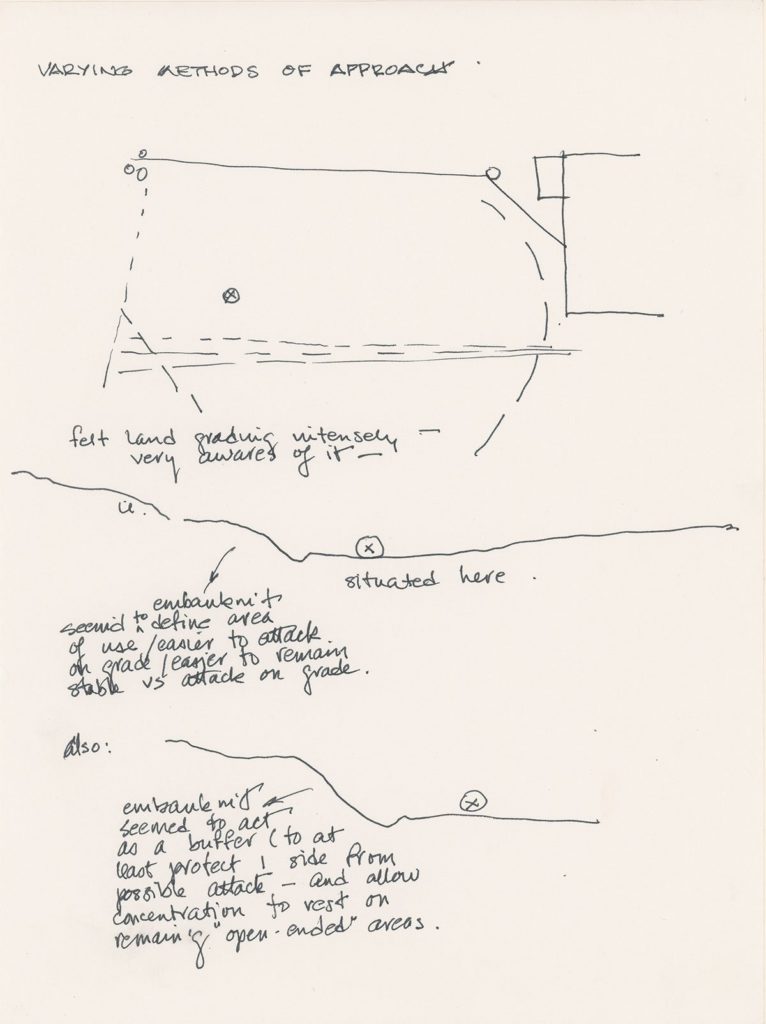
My first experience with video art happened by chance. After obtaining an architecture degree from Carnegie-Mellon University, in Pittsburgh, I joined Lawrence Halprin & Associates, an architectural firm in San Francisco that specialised in the planning of urban spaces and then conveying, through varying means of visual communication, such ideas to each of the respective communities we worked with. Through this I gained an acute environmental awareness as well as both immediate and long-term goals for urban planning. But with work slowing to a virtual halt in the wake of the 1970s oil crisis, I decided to take a leave of absence and enrolled at the San Francisco Art Institute, thinking I would bring my new skills and artistic practice back to Halprin. However, when I completed my degree the building industry was still in stasis, and so I chose a different route, moving to Europe to further extend my artistic practice and to study at the Accademia de Belle Artes in Florence. My presence was not that well received, partially because of the way I drew, which some of my professors saw as too ‘expressionistic’ for the stricter ‘academic’ approach propounded by the school.
One day, in 1974, I came across a small gallery storefront with two distinctive lithographs in the window: one by Dennis Oppenheim, Reading Position for Second Degree Burn (1970), and the other by Vito Acconci, Trademarks (1970). The gallery was seemingly closed for the evening but in the back I watched several people surrounding – and intensely watching – what appeared to be a television set. They saw me looking in and signaled for me to join them. In this way I was first exposed to ‘video art’ – a work by Allan Kaprow. This relatively small art gallery, Centro Diffusione Grafica (whose name, in 1975, changed to art/tapes/22) was tucked away on a side street off the Piazza della Signoria. It was owned and directed by Maria Gloria Conti Bicocchi and co-founded by her husband Giancarlo Bicocchi. This chance engagement changed my life. Centro Diffusione Grafica was a breath of fresh air for me as well as my introduction to video art.
Encouraged by of a number of the artists I had met through Centro Diffusioni Grafica, I decided to return to New York City, my birthplace. Artists such as Vito Acconci, Dick Landry and Charlemagne Palestine had conveyed to me that the city was then a most vital and living location for the arts. When I returned in 1975, my first works (which I considered ‘exercises’) were done with a Portapak lent to me by the artist Alan Sondheim. Starting out, I had no specific objective in mind other than to get acquainted with this relatively new medium, work with it and discover its potential. I had no thoughts of distribution or gallery affiliation. Certainly there was no thinking that forecast how this new form of art would be exhibited or distributed. Nor was there any thought about how – or even if – such work would enter into the permanent collections of museums, not least private collections.
Finding video to be the predominant voice for my art, I also found unusual opportunities to show my work alongside a collective of young artists, of which I became a part. We exhibited in alternative spaces, outside of the gallery or museum institutions. Later on, I began to formulate methods of dispersing the work and making it visible to a public, initially as single-channel work to be screened through a variety of ways and means, such as Technology/Transformation: Wonder Woman (1978–79), now in the Kramlich Collection in Napa Valley, California, and then installations such as (A)Drift of Politics (1978), first presented at The Kitchen and now in the Pinault Collection in the Palazzo Grassi, Venice. As my work developed it was increasingly shown and viewed, along with that of many others who came to prominence, especially as museums and galleries started to recognise media art as an essential and expanded new medium for artistic expression. Technical advances also allowed for a variety of public venues for exhibition. Nevertheless, the idea that work of an often confrontational and time-based nature might enter private collections and take up a place in domestic settings was not yet recognised or even thought about as a viable possibility.
The beginning of my engagement with the American collectors Pamela and Richard Kramlich started in 1990, when I was living in Frankfurt, Germany. A phone call at two in the morning from Rhona Hoffman, one of my dealers in Chicago, completely startled me. She wanted to know if I would agree to sell my multi-channel installation work, Tiananmen Square: Break-In Transmission (1990) to them. An immediate answer was deemed necessary. I had never contemplated that a multi-channel interactive video installation would be of interest to a private collector. Bleary-eyed and amazed, I listened as Rhona related how genuine Richard and Pamela Kramlich were in their intention to start an exemplary collection of media art, both single-channel and installation-based. She wanted me to take advantage of this rare opportunity. I did, and that marked the beginning of a relationship with the Kramlichs, which has lasted for more than 27 years.
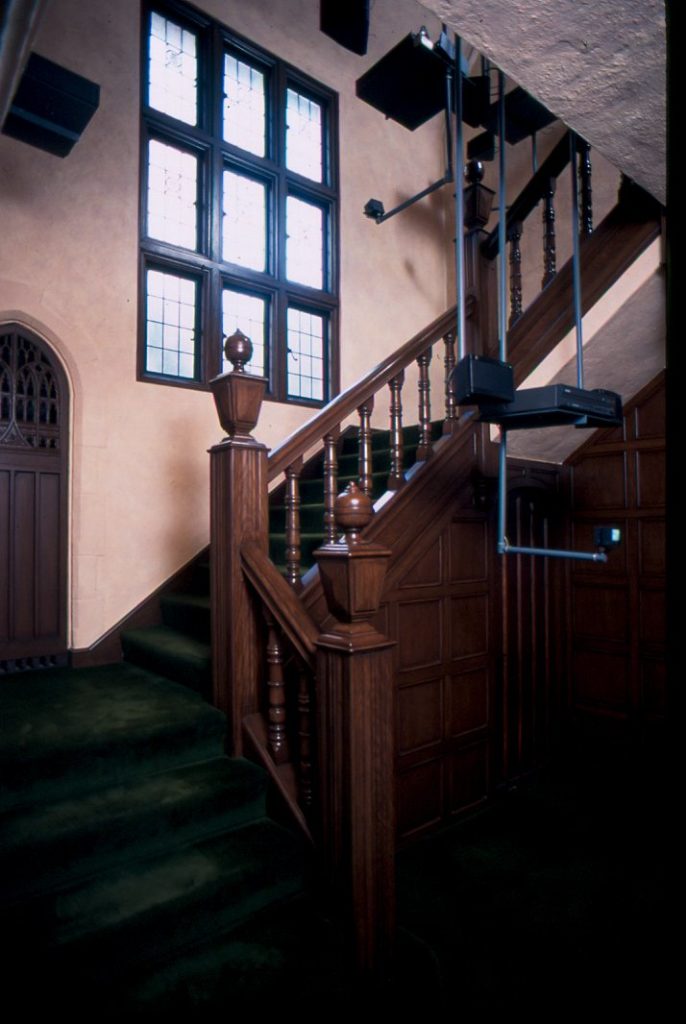
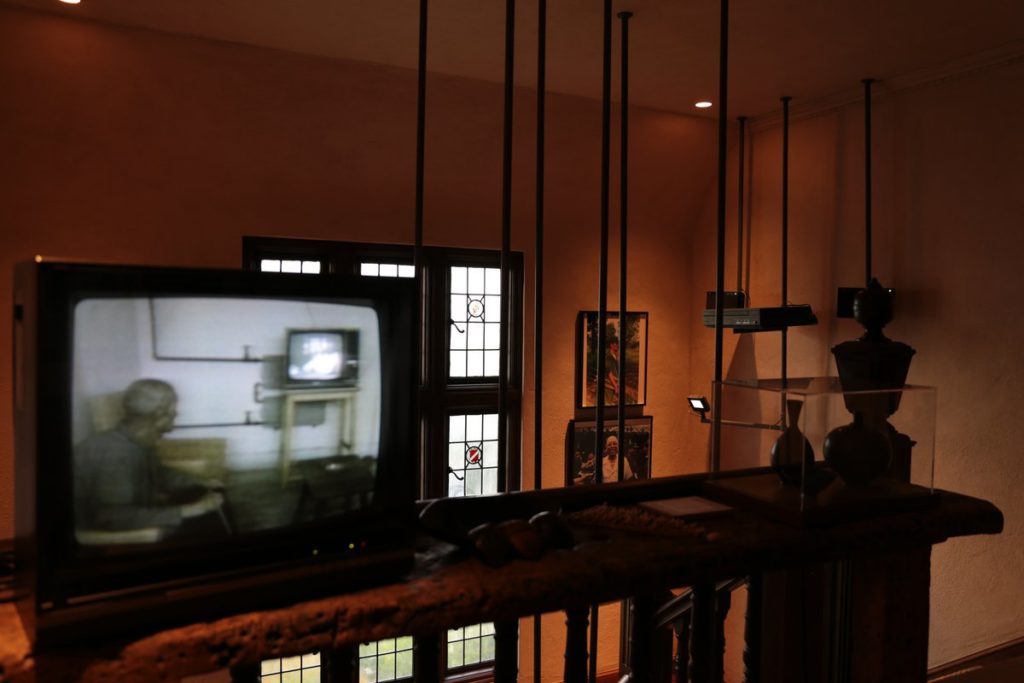
When I moved back to the US the following year, I flew to San Francisco to visit the Kramlichs at their residence in Presidio Heights and to see the best possibilities for installing this work on-site. They initially suggested installing the work in what was considered their basement ‘entertainment’ space. A few other works would later reside there, such as Bill Viola’s scaled-down rendition of The Greeting (1995) and Gary Hill’s Cut Pipe (1992), among others. However, I did not feel that this space suited my work. We then began a very open discussion about alternatives. I asked if Tiananmen Square could ascend their main staircase, from the first to the second floor of the home. I was amazed at their instant confirmation – and excitement. And so I proceeded to make several visits to position the varying elements onsite, finalising the installation so that each time a viewer turned on the stairway the work would gain another perspective, until it eventually culminated on the top floor, where a final larger monitor showed sequences culled from the other smaller monitors, as controlled by a hidden surveillance switch. This forced kind of parcours through the differing facets of the installation gave the work the resonance I desired: the confrontation with the differing four segments of video events, along with the culmination of the larger scale monitor on the second floor constantly changing both the selected portion of footage and editing these segments into a continuous flow. It was a great, expansive feeling even though I also wondered whether – or not – this meant that the work was, for the first time, being ‘domesticated.’
This was my first effort both to bring my work into a domestic setting and to use the pre-existing architectural details as a new contextualisation. As an architect I understood the environment as a context, but I had no idea how many people would tour the Kramlichs’ private collection (which turned out to be multitudes), nor could I truly gauge how the occupants of this residence could conceivably walk up and down their staircase, which now belonged mostly to this dynamic work. A prominent stained-glass window occupying one wall of the staircase became a highpoint for me. The television ‘window onto the world’, with its appropriation of television footage from the Tiananmen Square uprisings, echoed strongly with this more traditional ‘window’ of stained glass illuminated by daylight. This contextualization allowed the Tiananmen Square: Break-In Transmission to achieve spatial dynamics I had not previously imagined. As the Kramlichs themselves acknowledge, this pioneering effort to situate and even enhance the impact of a media work by placing it within an everyday living environment engendered the novel idea that they might imagine a new dwelling specifically designed to such a purpose.
The relationship between the work and its collectability continues to perplex many. Engaging and bringing media artwork into a private collection, especially in those early years, took courage, initiative and determination such as shown by Richard and Pamela Kramlich. It then required a formidable stance by the Kramlichs to call upon the architects Herzog & de Meuron to envisage a residence that would house, if not foreground, their diverse media art collection. In taking this emboldened step they were daring to imagine a radical architectural approach to architecture and art in order to bind together new living quarters with the exhibition of much of their collection. For some ten years, the planning of this residence seemed to be an active laboratory of experimental efforts to investigate the question, as Herzog & de Meuron originally put it, of ‘a home as a media installation or a media installation as a home.’ Over the next years, I watched the evolution of the collection, and this ambitious endeavour to house it, with continued interest.
In 2016, as the residence in Napa Valley reached completion, I received a phone call from Aebhric Coleman, Director of the Kramlich Collection, who wanted to discuss how best to install Attack Piece (1975). A site-position had already been selected, which considered the elements that constitute this two-channel work with its accompanying set of working drawings. How to then specifically position the monitors and original set of drawings within the chosen site still needed to be determined. Together we considered details such as the position of the monitors; how they were bracketed to the wall; the colour of the walls and carpet; and modification of lighting. We successfully fitted the work into the designated space, essentially an elongated and exaggerated alcove of an extended hallway spanning the dark cave-like floor that remains mostly below grade.
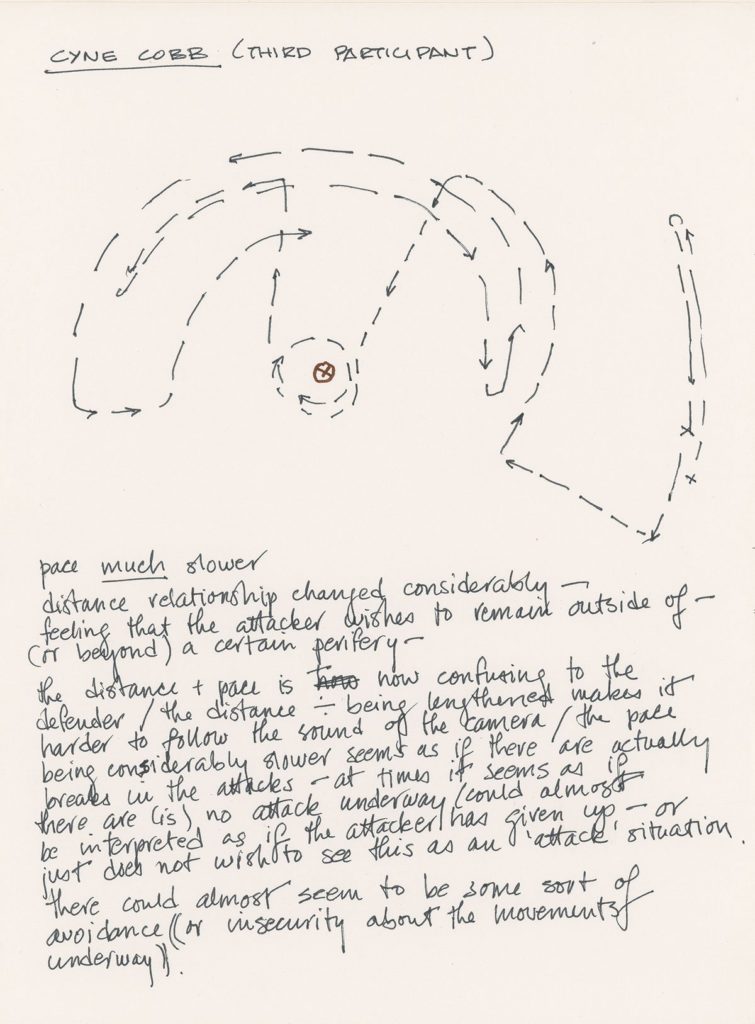
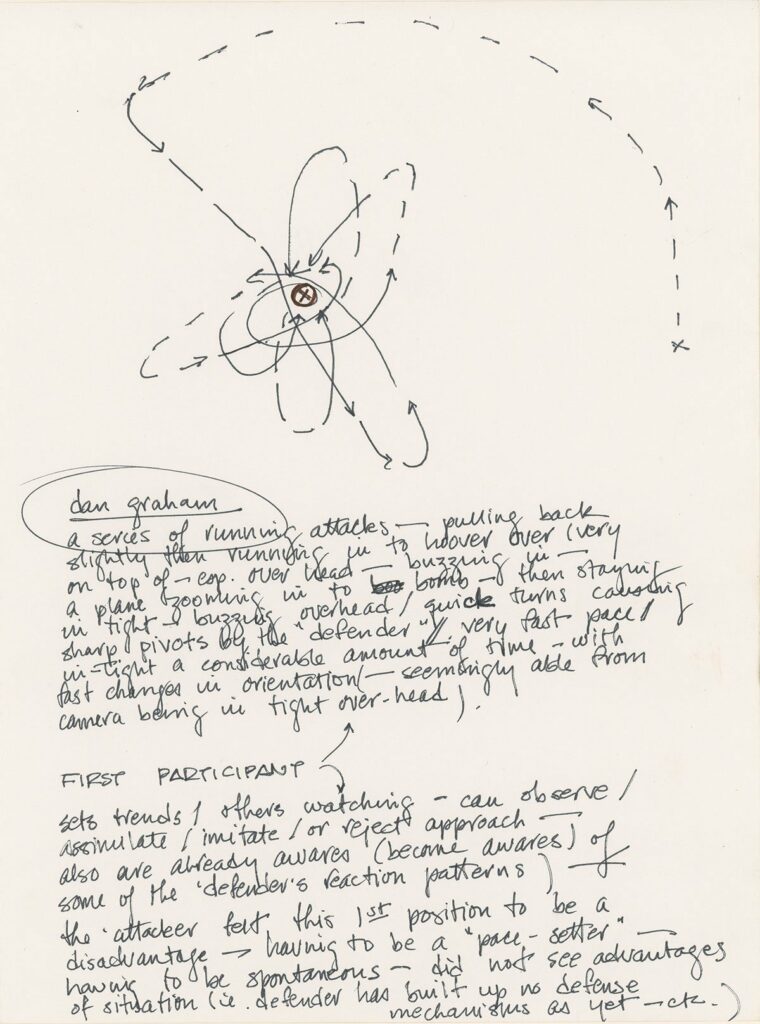
As Herzog & de Meuron’s designs evolved, some degrees of separation were maintained between living and presentation space; light and dark space; and between zones where the works would be the focus of the experience and those where they would be more ambient or accidental. Nevertheless there remains a deliberate fluidity and marked uncertainty in movement between them. Darker areas premiered mostly single- or multi-channel projection works placed in adjacent spaces. Viewed one after the next, they collectively forge a diverting passageway for viewers. At the time of writing works are separately turned on during tours. Thus, each work is seen singularly while the experience of viewing becomes a palimpsest, a layering of previous works as viewers linearly advance through the spaces. The below-grade floor – a kind of concrete bulkhead – also allows for a few individual single-channel works to be positioned along the main darkened extended hallway. It is as if both a series of deeply enmeshed movies as well as a culminating moving experience. Attack Piece occupies an offshoot of this area, formally separated from the darkened and intense room-by-room experiences, accompanied by flat work by Vito Acconci and a guest bathroom covered in Lawrence Weiner wallpaper. The work can be seen as situated in what may be considered a middle ground of the building, neither in the dark nor in an openly lit portion of the residence.
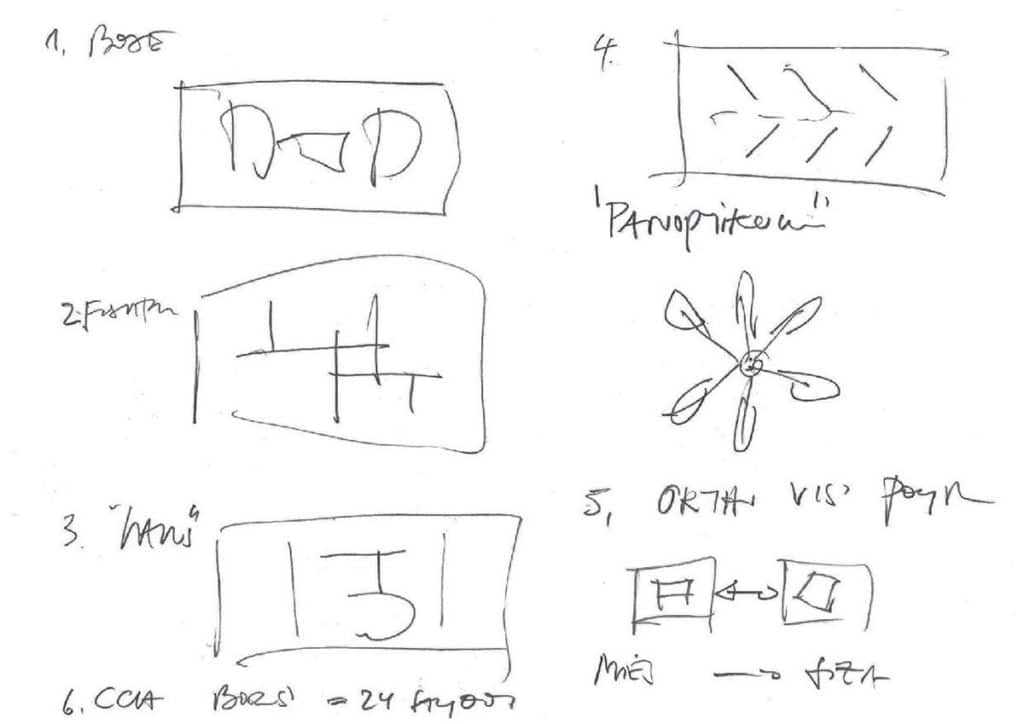
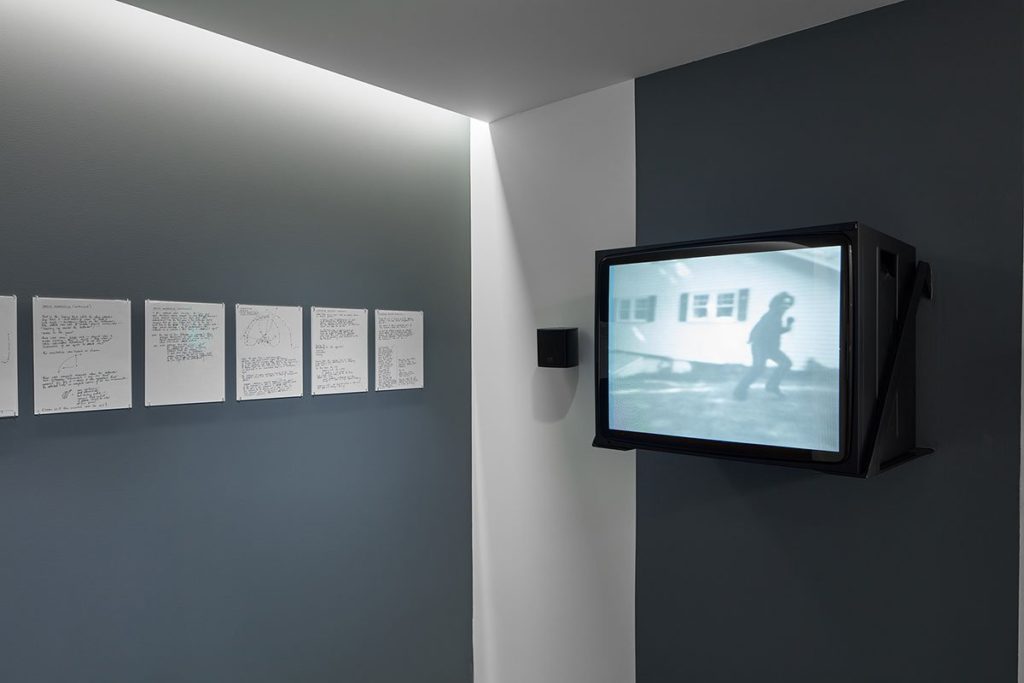
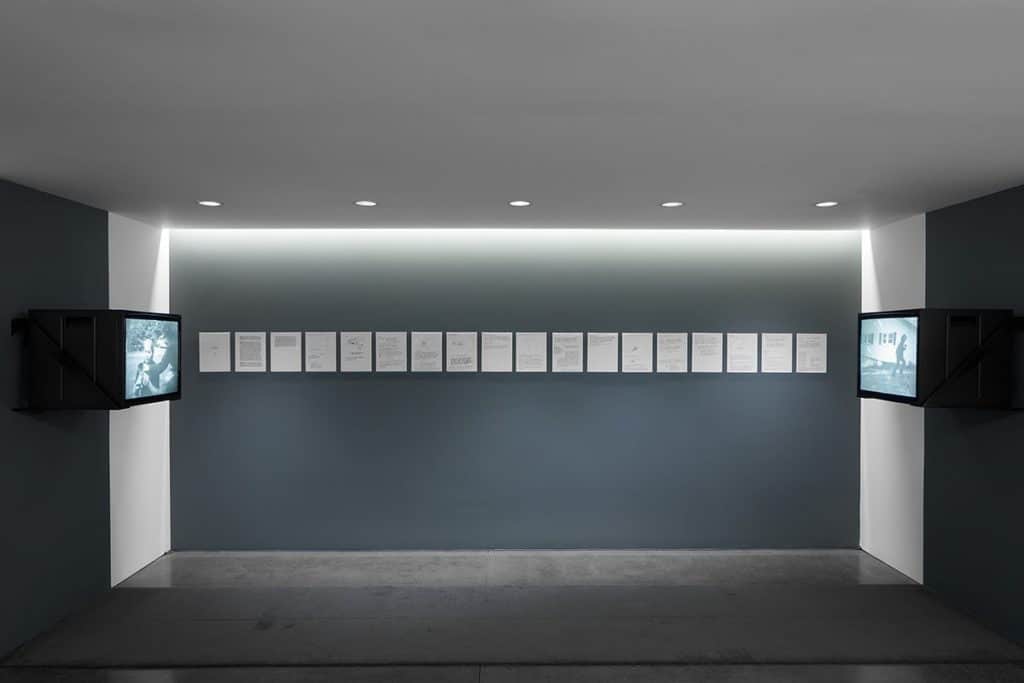
I would believe that most artists, from the conception of their work, conceive an idealised exhibition space to best contextualise their work. Today it is no longer necessary to confine work to the confines of a dark ‘cinematographic’ space (previously due to the necessity of accurately seeing the image). Now free from their encasement, the viewing area for media work can be extended into multiple coordinates and spaces. It is both interesting and challenging to observe where and how the artist posits themselves and their work, foreseeing the multiple ways that video can now be installed. Some media artists may see more of the object nature and form of their work, which would then be placed into a context that could be more variable and diverse in nature. But for me, with a degree in architecture and having practised for a number of years, content and context are indivisible. The Kramlich Residence, with its three floors of diversity, enables this expanded vocabulary of media. The works are positioned, or curated, to be experienced within spatial domains that are best suited to the artist’s original intention and nature.
Living with such media artwork is a choice few people make. The voices of video and media – usually both visual and auditory – easily impose themselves on any architectural or domestic space. Media art thus needs to be placed in isolation, but also in conjunction, with other works in a collection. Currently works in the Kramlich Collection are seen side-by-side and turned on one at a time for the viewer. There is therefore no collision of light and aural elements. Perhaps in the future this will change, allowing a more thorough flow-through patterning. While viewers are basically segregated from the Kramlich’s private living space, they are invited into multi-use areas, such as the dining room and conversation area, or the theatre space utilised mainly for the Matthew Barney Cremaster cycle, which also allows for other screenings. The top-floor glass pavilion also allows for a screen to be brought down from the ceiling, as if one were in a vastly oversized plane. Here television or artwork screenings can take place alongside a few installed art works, which also reside within the space.
The residence allows for living with and living away from the work in the collection. Unlike the Presidio Heights residence, which houses the original collection, here is a set of autonomous spaces that break into differing blends of the exhibition of media and related art works. In walking through the varying levels of this three-story building, I was frequently disoriented and unaware of my exact position – from underground to an optical sky pavilion over-ground. Spaces twisted, differentiated themselves and yet seemed to also meet and re-meet. Within these twists and turns, the media and visual artwork can be differentiated from the private living areas, which are ‘hidden’ from view. Thus, each work develops its own voice and can call out to a viewer in this rupture of exhibition and privacy, living within the confines of a single residence. A broken privacy is allowed by the Kramlichs to give voice to their most treasured asset: that of their collection.
This excerpt celebrates the publication of The Kramlich Residence and Collection, edited by Nicholas Olsberg and published by Hatje Cantz.
